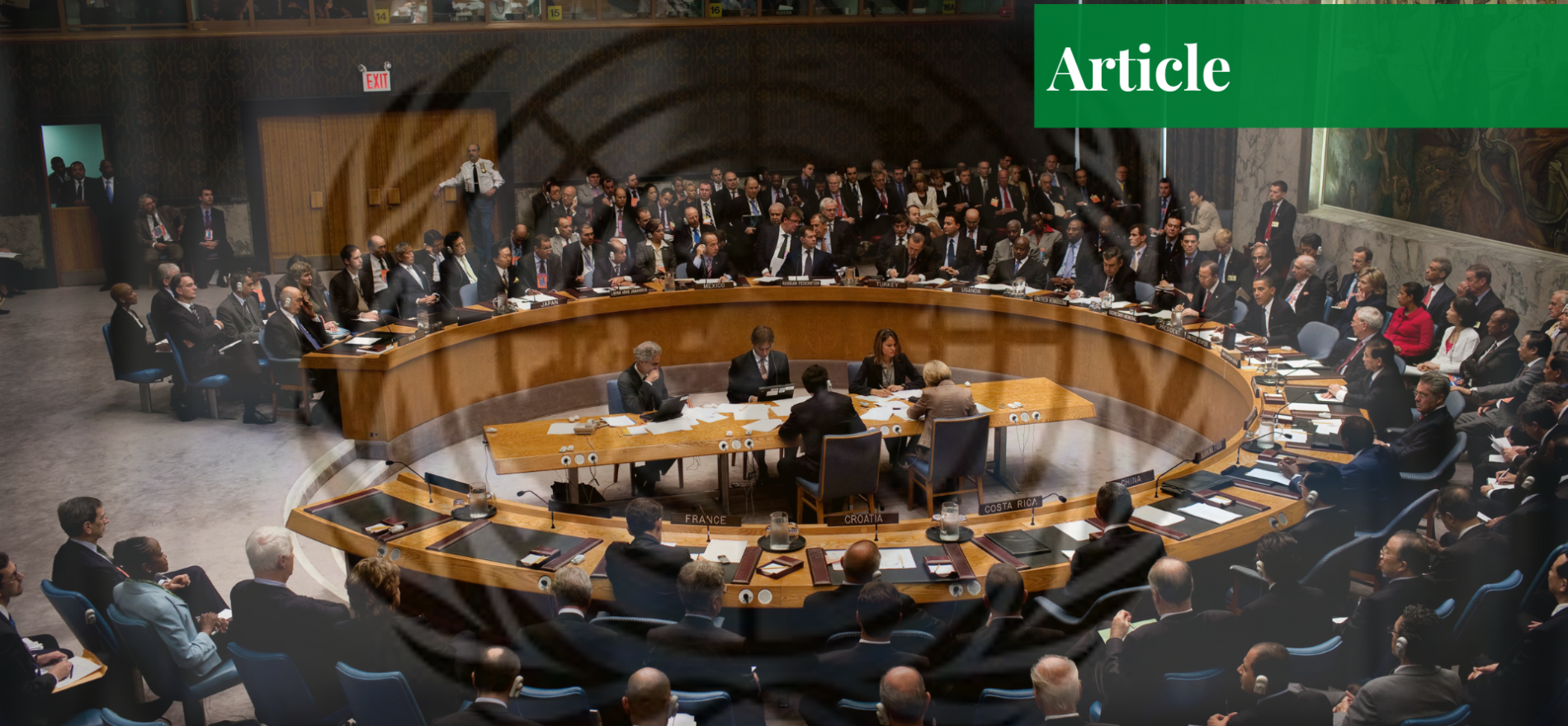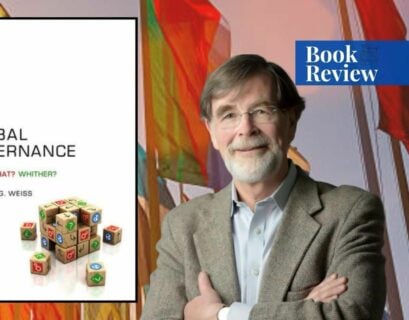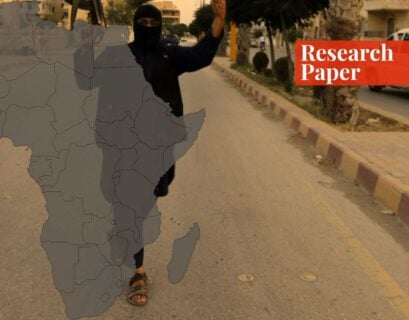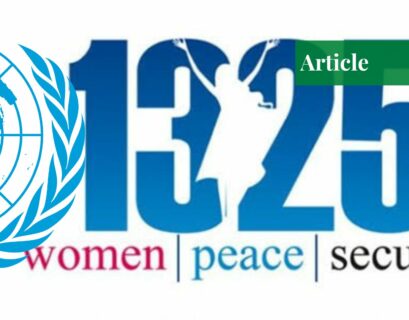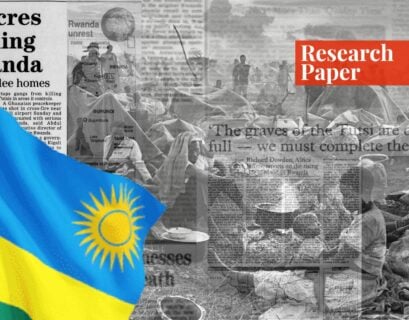Ms. Kundi is currently pursuing her Bachelor's in International Relations from Bahria University, Islamabad. She can be reached at [email protected].
United Nations Peacekeeping
The peacekeeping missions of the UN are authorized by the United Nations Security Council (UNSC) based on the organization’s mandates and requirements. The foremost reason for the establishment of the United Nations was to prevent future generations from experiencing the horrors of war. This UN resolution is reflected in the Security Council which strives to preserve peace and security in the world.
Even though peacekeeping was not a part of the UN Charter initially, it has evolved to become an integral part of the UNSC’s efforts to maintain peace in certain conflicted regions. UN-mandated peacekeeping missions have seen an increment, along with complications, in the tasks and roles assigned to them over the decades. The complication of peacekeeping was done because of the ground realities, and the need for the conflict to be resolved and for peace to be restored.
The first-ever UN peacekeeping mission was sent to the Middle East to unravel the dispute between Israel and the Muslim Arab states. It began in 1948 and since then the UNSC has authorized over 70 peacekeeping missions, with military and civilian peacekeeping volunteers coming from around 120 states. In the beginning, the missions were just observational bodies sent to states to ensure cease-fires. Their mandate did not extend to military involvement. However, over the years, peacekeeping missions have evolved to something more.
First Generation Peacekeeping
The first generation of peacekeeping missions occurred during the time frame of the Cold war. During this period, the rivalry between the US and the USSR, and the states in their respective blocs, proved to be a challenge to the UN Security Council. In its initial state, peacekeeping was limited to inducing a ceasefire and supporting and sustaining peace. The efforts of the first-generation peacekeepers were focused on giving the political parties involved an extended time to resolve their dispute through peaceful methods.
One of the earliest missions deployed by the UN was the United Nations Military Observer Group in India and Pakistan (UNMOGIP); it concentrated on the Kashmir issue between India and Pakistan. This mission, which continues even today, is of an observatory and monitory kind, involving only a few hundred unarmed personnel.
The main role of the first-generation peacekeeping missions was of observing, reporting, and extending mediation through certain confidence-building measures. The United Nations Operation in the Congo (ONUC) was the first of its kind because it incorporated a large number of armed military personnel.
ONUC was initiated in July 1960 to assist the Republic of Congo in its independence from Belgium. Apart from that its tasks included the maintenance of peace and stability in the state, and providing technical assistance to the government in running and setting up state affairs and civil institutes.
The late 1940s to 1960s consisted of the period of decolonization. The Security Council worked very closely with the Trusteeship Council of the UN to succor newly established states in achieving peace. They tried to avert or reduce the hostilities of a civil war resulting from the hasty departure of the colonizers. In light of this decolonization process, the role of the peacekeepers in Congo was slightly modified.
This modification included the protection of the territorial integrity of the state, to ensure there is no foreign political pressure on the state, and to also ensure the withdrawal of any foreign political, military, and paramilitary agent that was not working under the UN. Furthermore, they were allowed to use force, if necessary.
A similar UN peacekeeping mission was also extended to West New Guinea in 1962 following an agreement between Indonesia and Netherlands. A ceasefire was monitored and law and order were maintained until power was transferred over to the Indonesian government from the Dutch authorities.
Other peacekeeping missions of the first generation include the UN peacekeeping mission to the Dominican Republic when a civil war broke out in the former Spanish territory. The USA sent its troops to Dominica, which is only a few hours away from the southeastern state of Florida in the US. This was partly done to protect the Americans in the Dominican Republic and to bring them back to safety, and so the US could establish itself as a political hegemon and leader in the world.
Drawbacks of the First Generation
In the first generation, the peacekeepers mainly observed with the consent of the parties involved. This proved to be both desirable and undesirable as witnessed in the case of the United Nations Interim Force in Lebanon (UNIFIL) in southern Lebanon. It failed to fulfill its mandate since it did not enjoy the support of the parties involved.
Moreover, consent could also be withdrawn once it was given. The perfect example of this can be seen in Egypt during the Suez Canal crisis when Gamal Abdel Nasser withdrew his consent which first allowed the UN forces to enter the country. The UN forces were just set up as a part of an interim arrangement and had to remain impartial and neutral between the parties.
This neutrality meant that they would not extend support to any party and further the interests of any agent. If a party violated an agreement, the most the UN peacekeepers could do was criticize it and build international pressure and support against them. This did not prove very effective in peacekeeping and stabilizing a ceasefire.
Time and again a party or rebel group in the civil war would violate agreements and attack the UN troops or civilians, undermining the peace process greatly. The UN’s refusal to allow peacekeepers to use force, even for self-defense, prior to the modifications in the Congo mission, also did not benefit the peacekeepers. They couldn’t protect themselves or the civilians. An example of this is the death of 245 military personnel in Congo along with the death of the UN secretary-general Dag Hammarskjold in 1961.
Second Generation Peacekeeping
When the Cold War ended and the political scenario of the world changed drastically, so did the role and requirements of the UN peacekeeping missions. In the post-Cold War surge, the role of the missions changed from an observatory one to a more multidimensional one. Previously, the UN peacekeeping missions mainly dealt with inter-state conflicts but in the post-Soviet Union era, they were increasingly met with intra-state disputes and civil wars.
The world’s political scenario changed from conflicts between states to conflicts within states on the basis of ethnicities or religion, such as in Rwanda and Bosnia. The second-generation peacekeeping evolved from just maintaining cease-fire agreements to involving other comprehensive activities like security and humanitarian objectives.
The peacekeepers were responsible for giving technical assistance for building civil institutes of governance, monitoring and ensuring human rights, disarmament of mercenaries and rebel groups, and their reintegration into a peaceful society. Along with deploying military personnel, UN missions were now incorporating civilians on a mass scale as well.
Human rights activists, civil police, diplomats, administrators, economists, legal and electoral experts, communication experts, and civil affairs specialists were all now an integral part of these missions for the possibility of sustainable long-term peace. The missions made use of preventive diplomacy to reduce the possibility of the dispute spreading to a greater level and for bringing hostile groups to an agreement.
The Fall of Peacekeeping and the UNSC Hierarchy
The mid-90s was a period of hard criticism for the UN missions as the world saw it fail to protect its troops, civilian populations, and to establish meaningful peace. The budget allotted to these missions went down drastically along with the number of troops. Mass failure in Yugoslavia, Bosnia, Rwanda, and Somalia made matters worse and the UN had to reassess its role.
The UN Security Council was unable to maintain some missions and it had to reduce the number of active missions. It was forced to reassess its failures. The mass genocide of Bosnian Muslims by the hands of Bosnian Serbs and the ethnic cleansing in Rwanda compelled the Security Council to re-evaluate whether or not its components of impartiality, neutrality, and non-use of force were effective, despite spending immense funds on these missions.
The Security Council works on power hierarchy, some countries with veto power can block or alter the mandate to what they deem fit for their state interests. Russia, and sometimes even China, has used its veto power multiple times to block any resolution to hold the Assad regime accountable in Syria.
Similarly, Russia and China vetoed the UN’s resolution to establish a “peaceful political process” in Venezuela. Due to the power struggle in the Security Council, the UN has also failed to find a solution to the on-going Yemeni civil war. The UNSC allows the powerful countries of the North to enforce their interests on the South.
The first and second generations of UN peacekeeping missions were marked by immense criticism due to the principles of impartiality and non-use of force, as well as for the projection of western interests on southern countries. The need of the hour was to combat these criticisms and counter them effectively.
Third Generation Peacekeeping: Combating Criticism
For the UN to effectively counter the criticism, committing to the international legal, political, territorial, and humanitarian norms and laws was very important. Furthermore, greater military robustness and strength were required to ensure peace and protection of the lives, properties, dignity, basic human rights, and the economic and social well-being, etc. of the civilian population.
The Brahimi report of 2000 was famously critical of the UN peacekeeping missions. It highlighted their weaknesses and tried to develop a new strategy, a new doctrine, and a novel plan for the third generation’s missions and operations. It called for more robust operations that could tackle aggression in a better way. The Brahimi report serves as a valuable paper for understanding the nature and the working of contemporary peace missions.
The capacity of the UN peacekeeping missions was extended and strengthened to effectively manage operations. For actual meaningful assurance of peace, the purpose of these peacekeeping missions changed from collective security to securing human rights. The UN itself was formed on the basis of collective security but for the sake of sustainable peace in conflicted territories, the most basic unit actors—humans—were to be given priority.
The third generation of peacekeeping involves the use of enforcement actions and does not require the consent of all the parties involved in the conflict. The UNSC realized that the principle of consent from the parties involved had to be reconsidered because in some cases there was no government from which consent could be taken, like in the case of the UN Assistance Mission in Somalia (UNSOM).
Impartiality was criticized in the Rwandan genocide where UN troops could not extend support to any party and neither could they use force, even when they were witnessing mass killings of local people. In short, the developments of the third generation of peacekeeping were designed to overcome the shortcomings of the past two while keeping in mind the failures of Rwanda, Somalia, and Bosnia.
Allowing the use of force, however, was met with difficulties since, as some would argue, it undermined the sovereignty of the states. The peacekeeping missions had to keep in mind that they didn’t interfere in the internal matters of a state, while simultaneously ensuring human rights and security.
The UN also started authorizing and incorporating regional organizations into its missions to look after the provision of human security. In Kosovo, NATO worked closely with the European peacekeepers. Regional partnerships like that of NATO and the UN Mission in Kosovo (UNMIK) are very important but sometimes, they fail to coordinate in certain aspects and have their ways of carrying out things.
In contemporary times, the United Nations has expanded the roles assigned to the peacekeepers. Their tasks now encompass assisting economic development, political reconciling, infrastructure redevelopment, preservation of historical and cultural sites, giving medical aid, and assisting in setting up civil institutes.
Contemporary Challenges
Peacekeeping missions have to evolve with rapidly changing times and political scenarios. Armed conflicts are now widespread thanks to the developments in technology and the easy acquisition of weapons. Black markets and shadow economies make it even more manageable for rebel groups to buy weaponry, including weapons of mass destruction.
This poses a great threat to the safety and security of the UN troops and the civilians. These groups use dirty war tactics and target peacekeepers, women, and even children with their terrorizing acts. It also, inevitably, poses a threat to world peace given the caliber of the weapons one can acquire. Peacekeeping missions of today have to be readily equipped with the latest technology and weaponry to tackle this issue and the non-use of force can no longer be an option.
Conflicts have also shifted from the interstate to the intra-state level. Interstate conflicts can be resolved by the collective pressure of the international community and by mediation from alliances and blocs. Whereas, the intra-state conflicts are far more complex and require an extensive reassessment and redesigning of a state’s institutions. Different factors like economy, culture, and politics intertwine and make them even more complex. Several groups can be the stakeholders and this makes the situation more difficult.
Since peacekeepers are vulnerable and required to engage in dangerous activities, they are often the targets in the war-torn areas where they are deployed. Intercommunal attacks and extremism need to be thoroughly addressed. Furthermore, peacekeeping missions are sometimes prolonged because structural issues are often not addressed and reformed. For example, the UN Mission in Bosnia and Herzegovina (UNMIBH) started in 1995 and lasted till 2002, and the UN Mission in Kosovo (UNMIK) started in 1999 and continues even today.
The UN missions are marked by the weak political will of local leaders to resolve issues, a fading consent with time, and a frail design to exit these missions which if done hastily, will make matters worse and cause newer rebel groups to emerge to seize power and control. Consent can weaken with time and this can restrict the movements of the troops. This limitation on movement can mean that the UN troops cannot counter-attack and provide medical aid in time; it also guarantees their failure to protect civilians.
In face of growing threats of weapons in the hands of rebel groups, the enhanced role of UN troops, and the financing and funding of these missions also become a problem. Sexual abuse and violence are rampant in conflict-torn regions and there is little to no accountability for these acts.
Moreover, the UN has yet to formalize rules to provide justice to the victims. Cultural and language differences between the troops and the local population, and sometimes even among the troops coming from different states, can prove to be a hurdle in the smooth running of these missions.
Conclusion
Currently, there are 12 active peacekeeping missions in the world. To maintain and sustain them, a well-equipped, well-trained force is required which is conveniently structured as well. The participation of women in these missions is necessary because women and children are vastly affected by conflicts, and women troops, health workers, or administrators can sometimes cater better to these groups.
Throughout the years, the UN peacekeeping operations have evolved from the status of an observer group to a human rights enforcer. However, it is far from perfect and still needs to be reformed. Even within the peacekeepers, there are those who take advantage of the situation in the conflict zones. While the peacekeepers aim to ensure human rights, some violate them as well.
If you want to submit your articles and/or research papers, please check the Submissions page.
The views and opinions expressed in this article/paper are the author’s own and do not necessarily reflect the editorial position of Paradigm Shift.
